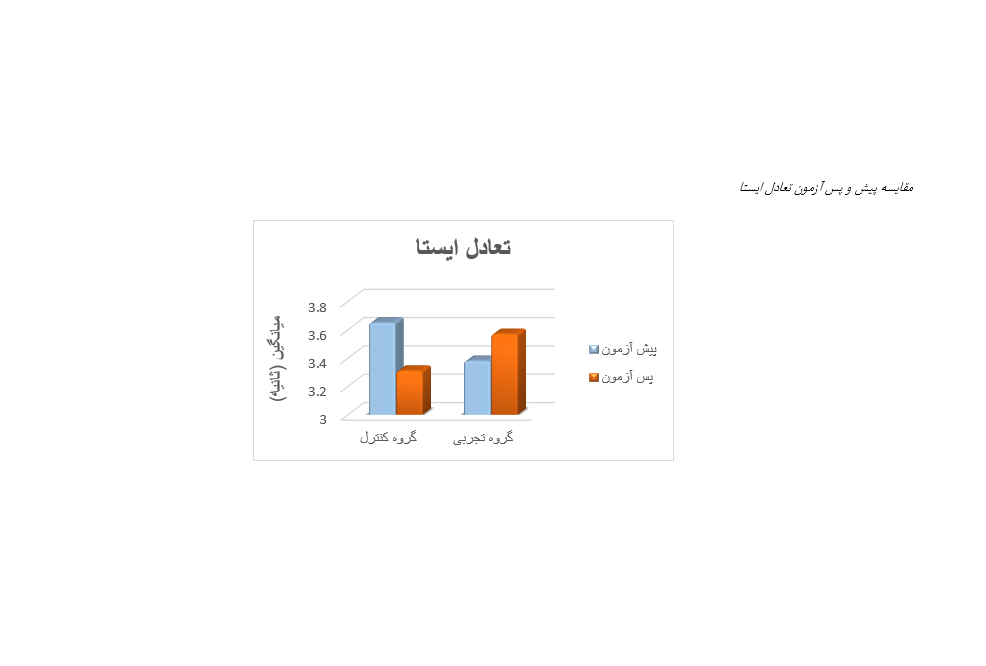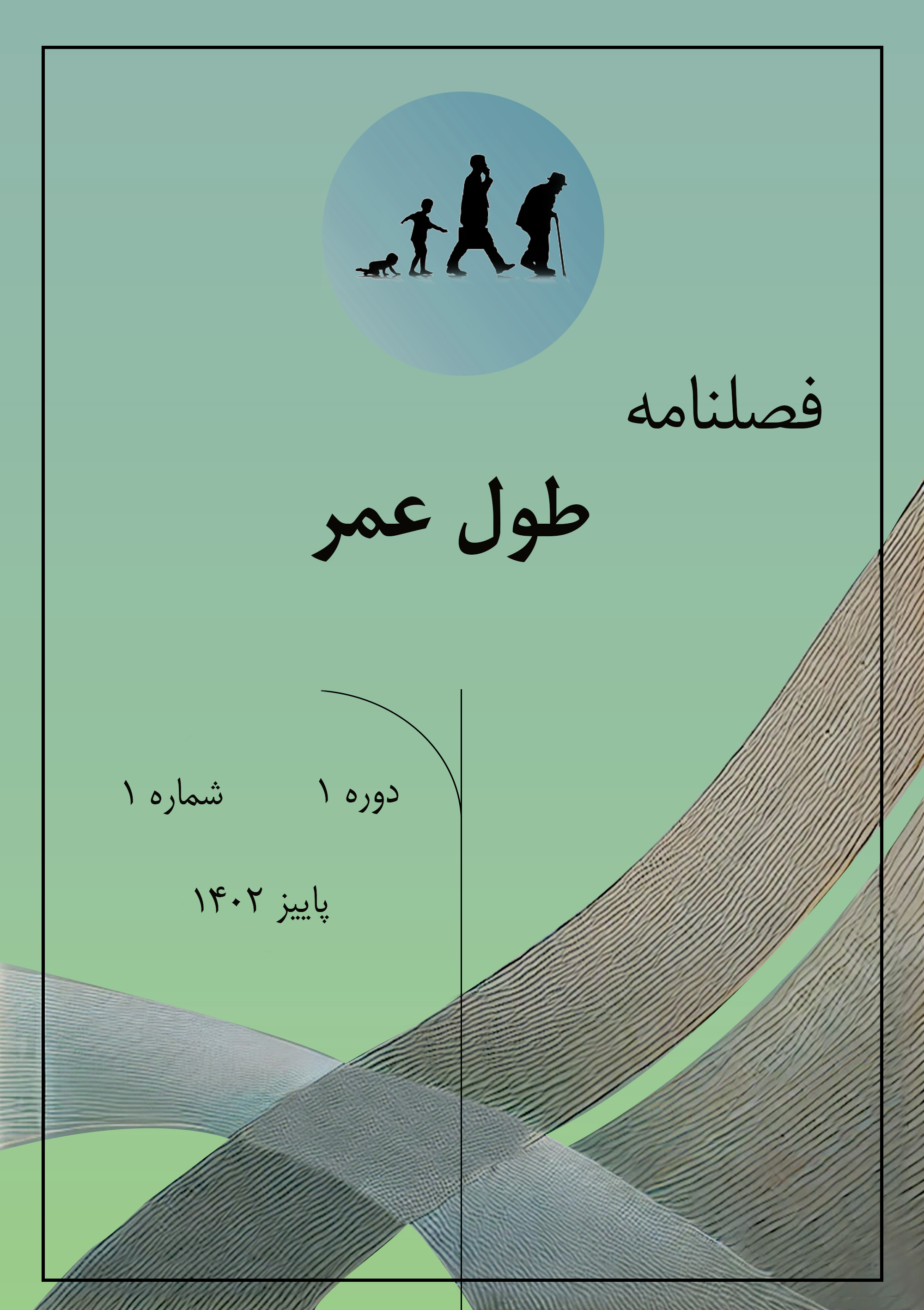تاثیر تمرینات فانکشنال بر شاخصهای تعادلی مردان سالمند
کلمات کلیدی:
تعادل ایستا, تعادل پویا, مردان سالمند سالم, تمرین هوازیچکیده
هدف از این مطالعه تعیین تاثیر تمرینات فانکشنال بر تعادل ایستا و پویای مردان سالمند انجام شد. در این پژوهش نیمه تجربی 26 مرد سالمند سالم آسایشگاه سالمندان شهر قزوین که داوطلب شرکت در پژوهش بودند به طور هدفمند انتخاب شده و در دو گروه تجربی (18 نفر) و کنترل (17 نفر) قرار گرفتند. گروه تجربی به مدت 8 هفته و هر هفته سه جلسه در برنامه تمرین فانکشنال شرکت نمودند. تعادل ایستا و پویای آزمودنیها با استفاده از آزمونهای تعادلی لک لک و زمان برخاستن و رفتن در دو مرحله قبل و بعد از 8 هفته ارزیابی شدند. تجزیه و تحلیل آماری با استفاده از آزمونهای تی زوجی و تی مستقل انجام گرفت. پس از اجرای برنامه تمرین فانکشنال تعادل پویا در گروه تجربی به طور معناداری افزایش یافت (00/0p=)، اما در تعادل ایستا تغییر معناداری ایجاد نشد (00/0p=). به نظر میرسد تمرینات فانکشنال منظم موجب بهبود تعادل پویا در سالمندان میشود، بنابراین به عنوان یک شیوه تمرینی مناسب برای افزایش تعادل توصیه میشود.
مراجع
Alfieri, F. M., Riberto, M., Gatz, L. S., Ribeiro, C. P. C., Lopes, J. A. F., Santarém, J. M., & Battistella, L. R. (2010). Functional mobility and balance in community-dwelling elderly submitted to multisensory versus strength exercises. Clinical Interventions in Aging, 181-185.
Ballesta-García, I., Martínez-González-Moro, I., Rubio-Arias, J. Á., & Carrasco-Poyatos, M. (2019). High-intensity interval circuit training versus moderate-intensity continuous training on functional ability and body mass index in middle-aged and older women: a randomized controlled trial. International journal of environmental research and public health, 16(21), 4205.
Berg, K. (1989). Balance and its measure in the elderly: a review. Physiotherapy Canada, 41(5), 240-246.
Bigdeli, S., Dehghaniyan, M. H., Amani-Shalamzari, S., Rajabi, H., & Gahreman, D. E. (2020). Functional training with blood occlusion influences muscle quality indices in older adults. Archives of Gerontology and Geriatrics, 90, 104110.
Cadore, E. L., Rodríguez-Mañas, L., Sinclair, A., & Izquierdo, M. (2013). Effects of different exercise interventions on risk of falls, gait ability, and balance in physically frail older adults: a systematic review. Rejuvenation research, 16(2), 105-114.
de Oliveira, M. R., da Silva, R. A., Dascal, J. B., & Teixeira, D. C. (2014). Effect of different types of exercise on postural balance in elderly women: a randomized controlled trial. Archives of Gerontology and Geriatrics, 59(3), 506-514.
de Souza Santos, C. A., Dantas, E. E. M., & Moreira, M. H. R. (2011). Correlation of physical aptitude; functional capacity, corporal balance and quality of life (QoL) among elderly women submitted to a post-menopausal physical activities program. Archives of Gerontology and Geriatrics, 53(3), 344-349.
Donath, L., Rössler, R., & Faude, O. (2016). Effects of virtual reality training (exergaming) compared to alternative exercise training and passive control on standing balance and functional mobility in healthy community-dwelling seniors: a meta-analytical review. Sports medicine, 46, 1293-1309. https://doi.org/10.1007/s40279-016-0485-1
Ferraresi, J. R., Prata, M. G., & Scheicher, M. E. (2015). Assessment of balance and level of functional independence of elderly persons in the community. Revista Brasileira De Geriatria E Gerontologia, 18, 499-506.
Giné-Garriga, M., Roqué-Fíguls, M., Coll-Planas, L., Sitjà-Rabert, M., & Salvà, A. (2014). Physical exercise interventions for improving performance-based measures of physical function in community-dwelling, frail older adults: a systematic review and meta-analysis. Archives of Physical Medicine and Rehabilitation, 95(4), 753-769. https://doi.org/10.1016/j.apmr.2013.11.007
Gomeñuka, N. A., Oliveira, H. B., Silva, E. S., Costa, R. R., Kanitz, A. C., Liedtke, G. V., Schuch, F. B., & Peyré-Tartaruga, L. A. (2019). Effects of Nordic walking training on quality of life, balance and functional mobility in elderly: A randomized clinical trial. PLoS One, 14(1), e0211472.
Hernandes, N. A., Probst, V. S., Silva Jr, R. A. D., Januário, R. S., Pitta, F., & Teixeira, D. C. (2013). Physical activity in daily life in physically independent elderly participating in community-based exercise program. Brazilian Journal of Physical Therapy, 17, 57-63.
Iwamoto, J., Suzuki, H., Tanaka, K., Kumakubo, T., Hirabayashi, H., Miyazaki, Y., Sato, Y., Takeda, T., & Matsumoto, H. (2009). Preventative effect of exercise against falls in the elderly: a randomized controlled trial. Osteoporosis international, 20, 1233-1240.
Johnson, B. L., & Nelson, J. K. (1969). Practical measurements for evaluation in physical education.
Kang, S.-J., Kim, J.-H., & Ko, K.-J. (2015). Effects of Aerobic, Resistance, Balance Exercise Program on Skeletal Muscle Index, Functional Fitness, and Health-Related Quality of Life in Frail Elderly Women. The Official Journal of the Korean Academy of Kinesiology, 17(4), 9-20.
Karóczi, C. K., Mèszáros, L., Jakab, Á., Korpos, Á., Kovács, É., & Gondos, T. (2014). The effects of functional balance training on balance, functional mobility, muscle strength, aerobic endurance and quality of life among community-living elderly people: a controlled pilot study. New Medicine.
Liu‐Ambrose, T., Khan, K. M., Eng, J. J., Janssen, P. A., Lord, S. R., & Mckay, H. A. (2004). Resistance and agility training reduce fall risk in women aged 75 to 85 with low bone mass: A 6‐month randomized, controlled trial. Journal of the American Geriatrics Society, 52(5), 657-665.
Means, K. M., Rodell, D. E., & O’Sullivan, P. S. (2005). Balance, mobility, and falls among community-dwelling elderly persons: effects of a rehabilitation exercise program. American Journal of Physical Medicine & Rehabilitation, 84(4), 238-250.
Ogwumike, O., & Tijani, A. (2011). Balance performance of professional footballers with long-term lower limb musculoskeletal injury. African Journal of Physiotherapy and Rehabilitation Sciences, 3(1), 23-27.
Podsiadlo, D., & Richardson, S. (1991). The timed "Up & Go": a test of basic functional mobility for frail elderly persons. J Am Geriatr Soc, 39(2), 142-148. https://doi.org/10.1111/j.1532-5415.1991.tb01616.x
Ramezani, S., Biniaz, S. A., Yaghoubi, M., & Asadollahi, N. (2021). The effect of selected pilates exercises on balance, blood pressure, and body composition of inactive healthy elderly women. Journal of Vessels and Circulation, 2(1), 17-26.
Rogers, M. E., Rogers, N. L., Takeshima, N., & Islam, M. M. (2003). Methods to assess and improve the physical parameters associated with fall risk in older adults. Preventive Medicine, 36(3), 255-264.
Sadeghi, H., Norouzi, H., Karimi Asl, A., & Montazer, M. (2008). Functional training program effect on static and dynamic balance in male able-bodied elderly. Iranian Journal of Ageing, 3(2), 565-571.
Seco, J., Abecia, L. C., Echevarría, E., Barbero, I., Torres-Unda, J., Rodriguez, V., & Calvo, J. I. (2013). A long-term physical activity training program increases strength and flexibility, and improves balance in older adults. Rehabilitation Nursing Journal, 38(1), 37-47.
Shigematsu, R., Chang, M., Yabushita, N., Sakai, T., Nakagaichi, M., Nho, H., & Tanaka, K. (2002). Dance‐based aerobic exercise may improve indices of falling risk in older women. Age and Ageing, 31(4), 261-266.
Shigematsu, R., & Okura, T. (2006). A novel exercise for improving lower-extremity functional fitness in the elderly. Aging Clinical and Experimental Research, 18, 242-248.
Sousa, R. F. d., Gazzola, J. M., Ganança, M. M., & Paulino, C. A. (2011). Correlation between the body balance and functional capacity from elderly with chronic vestibular disorders. Brazilian Journal of Otorhinolaryngology, 77, 791-798.
Taheri, M., Irandoust, K., & Moddaberi, S. (2019). The effects of weight-bearing exercise on postural control and fatigue index of elderly males. International Archives of Health Sciences, 6(4), 122-125. https://doi.org/10.4103/iahs.iahs_22_19
Youssef, E. F., & Abd elhameed Shanb, A. (2016). Supervised versus home exercise training programs on functional balance in older subjects. The Malaysian journal of medical sciences: MJMS, 23(6), 83.
Yu, W., An, C., & Kang, H. (2013). Effects of resistance exercise using thera-band on balance of elderly adults: a randomized controlled trial. Journal of Physical Therapy Science, 25(11), 1471-1473.
Zhang, L., Weng, C., Liu, M., Wang, Q., Liu, L., & He, Y. (2014). Effect of whole-body vibration exercise on mobility, balance ability and general health status in frail elderly patients: a pilot randomized controlled trial. Clinical Rehabilitation, 28(1), 59-68.

دانلود
چاپ شده
ارسال
بازنگری
پذیرش
شماره
نوع مقاله
مجوز
حق نشر 2025 اسماعیل شعبانی ازدینی (نویسنده); مریم فرآیین فرآیین; سحر بیک (نویسنده)

این پروژه تحت مجوز بین المللی Creative Commons Attribution-NonCommercial 4.0 می باشد.









